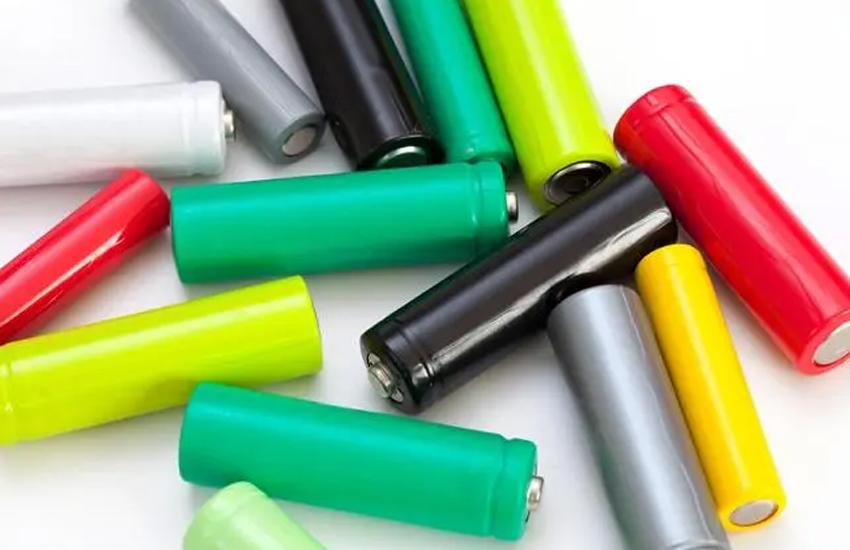What's the difference between a lithium-ion battery and a lead-acid battery?
The material difference between lithium ion battery and lead-acid battery
1. Lithium-ion battery manufacturing materials
Lithium ion batteries include polymer lithium ion batteries, lithium cobalt acid batteries, ternary lithium ion batteries and lithium ion iron phosphate batteries. They make their own critical materials: positive material, negative material, diaphragm and electrolyte.
(1) Among the positive materials, the most commonly used materials are lithium burrow, lithium manganate, lithium iron phosphate and ternary materials (nickel burrow manganese polymer). Positive electrode materials occupy a large proportion (the mass ratio of positive and negative electrode materials is 3:1 ~ 4:1), because the performance of positive electrode materials directly affects the performance of lithium-ion batteries, and its cost directly determines the cost of batteries.
(2) Among the anode materials, the anode materials are mainly natural graphite and artificial graphite. The anode materials being explored are nitriding, PAS, tin based oxides, tin alloys, nano-anode materials, and some other intermetallic compounds, etc. As one of the four major components of lithium-ion battery, anode material plays a critical role in improving battery capacity and cycle performance, and is at the core of the middle stream of lithium-ion battery industry.
(3) The most important market-based diaphragm materials are Polyolefin diaphragms, which are mainly polyethylene, PE and polypropylene (PP). The diaphragm is one of the key inner components of the lithium-ion battery structure. The performance of the diaphragm determines the interface structure and internal resistance of the battery, which directly affects the capacity, circulation and safety performance of the battery. The excellent performance of the diaphragm has a critical use for improving the comprehensive performance of the battery.
(4) Electrolyte is generally made of high purity organic solvent, electrolyte lithium salt, necessary additives and other raw materials under certain conditions and in a certain proportion. Electrolyte is used to conduct ions between the positive and negative electrodes of lithium-ion battery, which is the guarantee of high voltage, high specific energy and other advantages of lithium-ion battery.
2. Lead-acid battery manufacturing materials
The composition of lead-acid battery: plate, partition, shell, electrolyte, lead connection bar, pole and so on
(1) Positive and negative plates
Classification and composition: plate can be divided into positive plate and negative plate, which are composed of grid frame and active substance filled on it.
Usage: In the process of battery charging and discharging, the conversion of electric energy and chemical energy is achieved by the chemical reaction between the active substance on the plate and the sulfuric acid in the electrolyte.
Color distinction: the active substance on the positive plate is lead dioxide (PbO2), which is dark brown; The active substance on the negative plate is spongy pure lead (Pb), which is bluish gray.
Purpose of grid frame: holding active material and forming plate.
Plate group: In order to increase the capacity of the battery, a plurality of positive and negative plates are welded in parallel to form positive and negative plates group.
Special requirements for installation: During installation, the positive and negative plates are inserted into each other, and the divider is inserted in the middle. In each cell, there are always one more negative plate than positive plate.
(2) Partition
Purpose: In order to reduce the internal resistance and size of the battery, the battery internal positive and negative plates should be as close as possible; In order to guard against contact and short circuit, the positive and negative plates should be separated by a partition.
Material requirements: The partition material should be porous and permeable, and the chemical properties should be stable, that is, it has good acid resistance and oxidation resistance.
Materials: Commonly used partition materials are wood partition, microporous rubber, microporous plastic, glass fiber and cardboard, etc.
Installation requirements: During installation, the grooved side of the partition should face the positive plate.
(3) Shell
Purpose: For holding electrolyte and plate set
Material: It is made of material with acid resistance, heat resistance, shock resistance, good insulation and certain mechanical properties.
Structural features: The shell is an integral structure, and the interior of the shell is divided into 3 or 6 non-communicating single grids by the interwall. There are protruded ribs at the bottom to use the plate group. The space between the ribs is used to store the active substances that fall off to prevent short circuit between the plates. After the plates are loaded into the shell, the upper part is sealed with a battery cover made of the same material as the shell. There is a filling hole corresponding to the top of each cell on the battery cover for adding electrolyte and distilled water, and also for checking the electrolyte level height and measuring the electrolyte liquid pair density.
(4) Electrolyte solution
Application: Electrolyte can conduct electricity between ions and participate in chemical reactions in the process of electric energy and chemical energy conversion, that is, the electrochemical reaction of charging and discharging.
Composition: It is made of pure sulfuric acid and distilled water in a certain proportion, and its density is generally 1.24 ~ 1.30g/ml.
Special note: the purity of electrolyte is a critical factor affecting the performance and service life of the battery.
Differences in discharge performance between lithium-ion batteries and lead-acid batteries
1. In the low temperature environment of batteries, lithium-ion batteries in low temperature resistance, discharge performance is much better than lead-acid batteries.
2. The cycle life of lithium-ion battery is about twice that of lead-acid battery.
3. The operating voltage of Li-ion battery is 3.7V and lead-acid battery is 2.0V, and the discharge platform is higher than lead-acid battery.
4. In terms of battery energy density, lithium-ion battery is much higher than lead-acid battery.
5. Under the same capacity and voltage, lithium-ion batteries are lighter in weight and more flexible in size and shape than lead-acid batteries.
In spite of this, lead-acid battery still has a strong current discharge performance, stable voltage characteristics, wide range of temperature application, large capacity of single battery, high safety and rich raw materials and renewable use, low price and a series of advantages, in the vast majority of traditional categories and some emerging use categories, occupy a firm position.
Lithium-ion batteries and lead-acid batteries in the use of the scope of the difference
1. As lithium-ion batteries are more flexible and customized in terms of energy density, size and shape, they tend to be used in light smart devices, such as 3C products of smart wearable and portable mobile power supply.
2. Lead-acid batteries are large and bulky due to their single form, and most of them are used in energy storage devices, which are inconvenient to carry but cannot always use AC power.
Contact with us for more good products
Our web: www.aiinos.com
Products details :
https://www.aiinos.com/solar-panelinverter.html
Email: info@aiinos.com
Whatsapp: 86-15813802826




